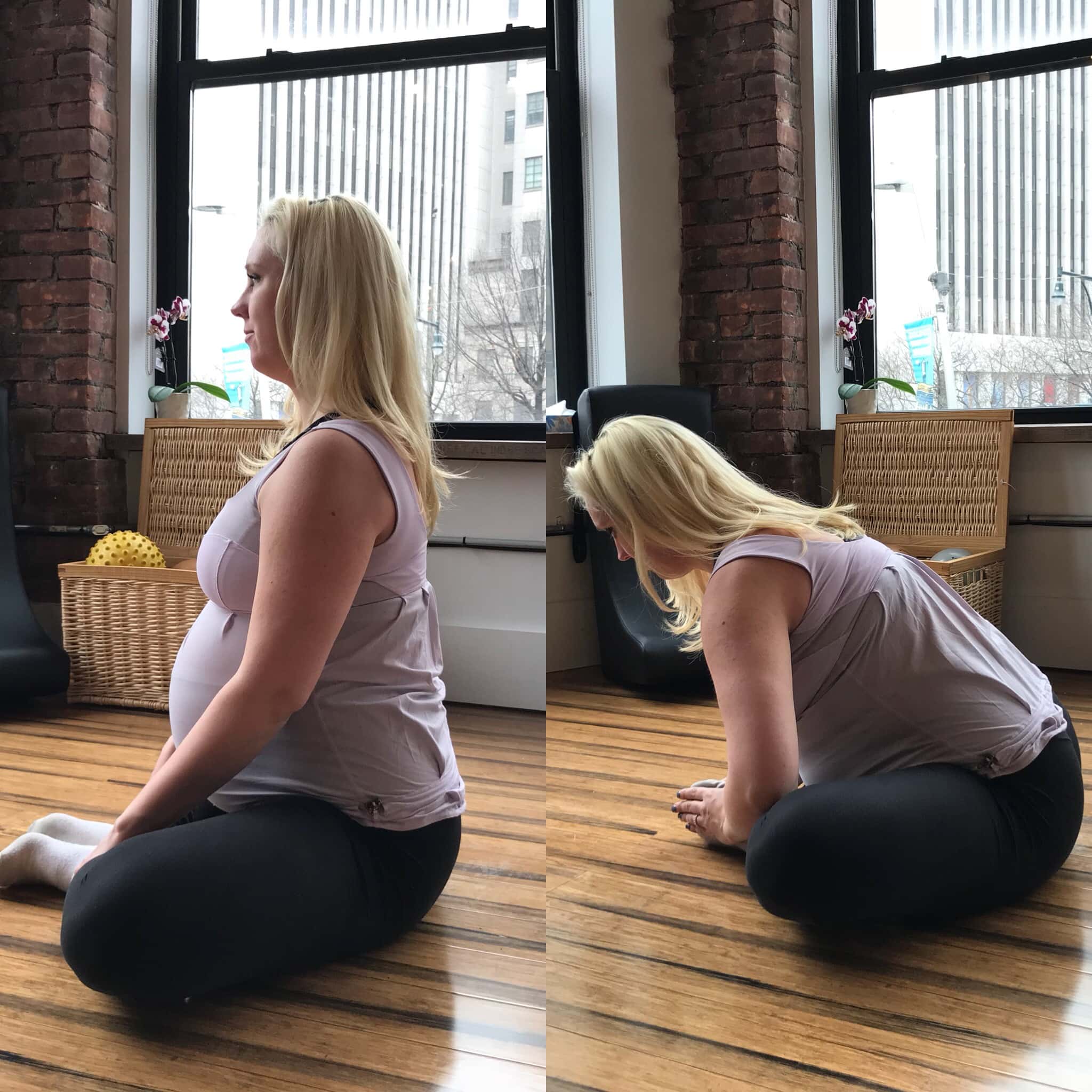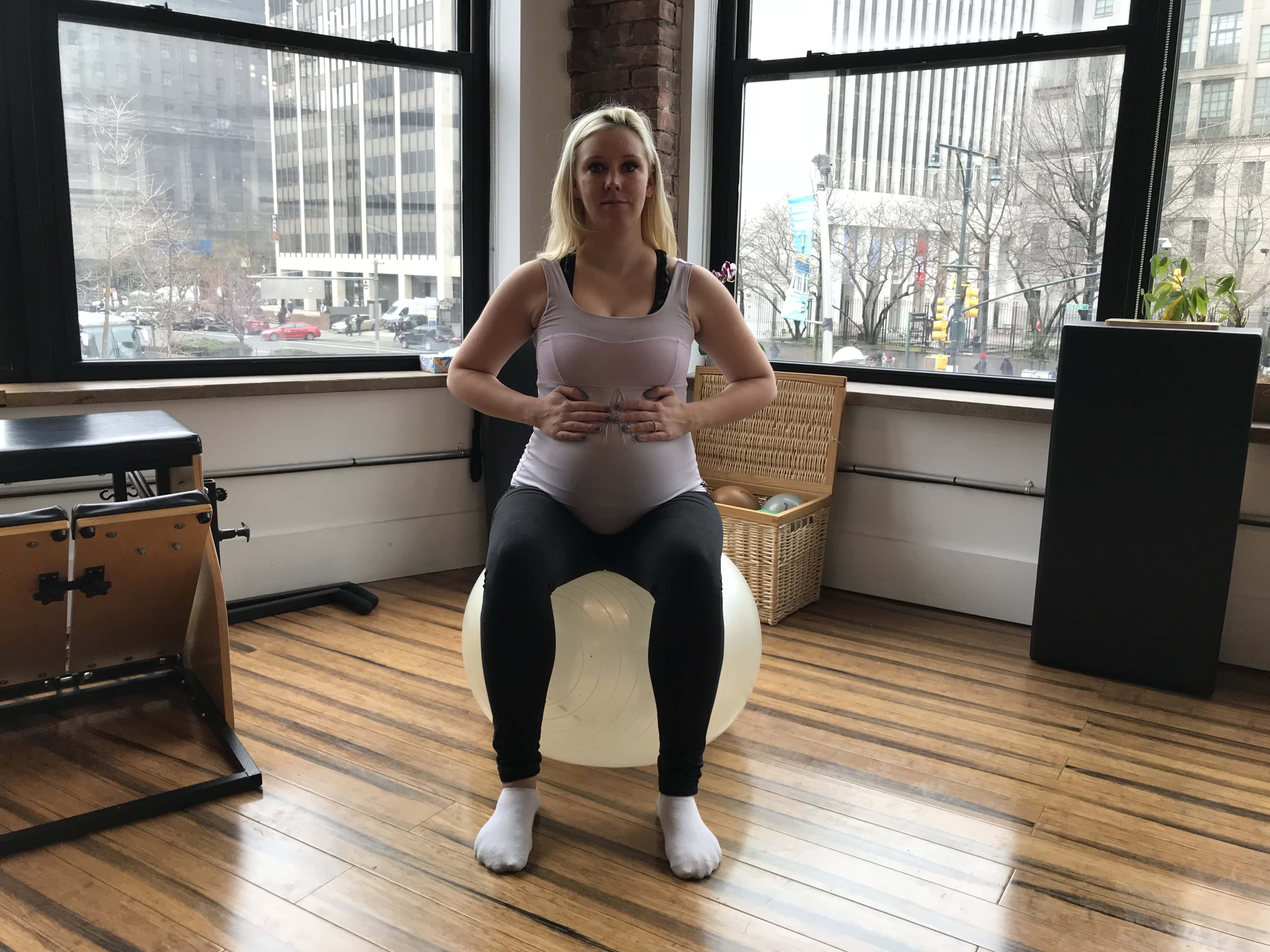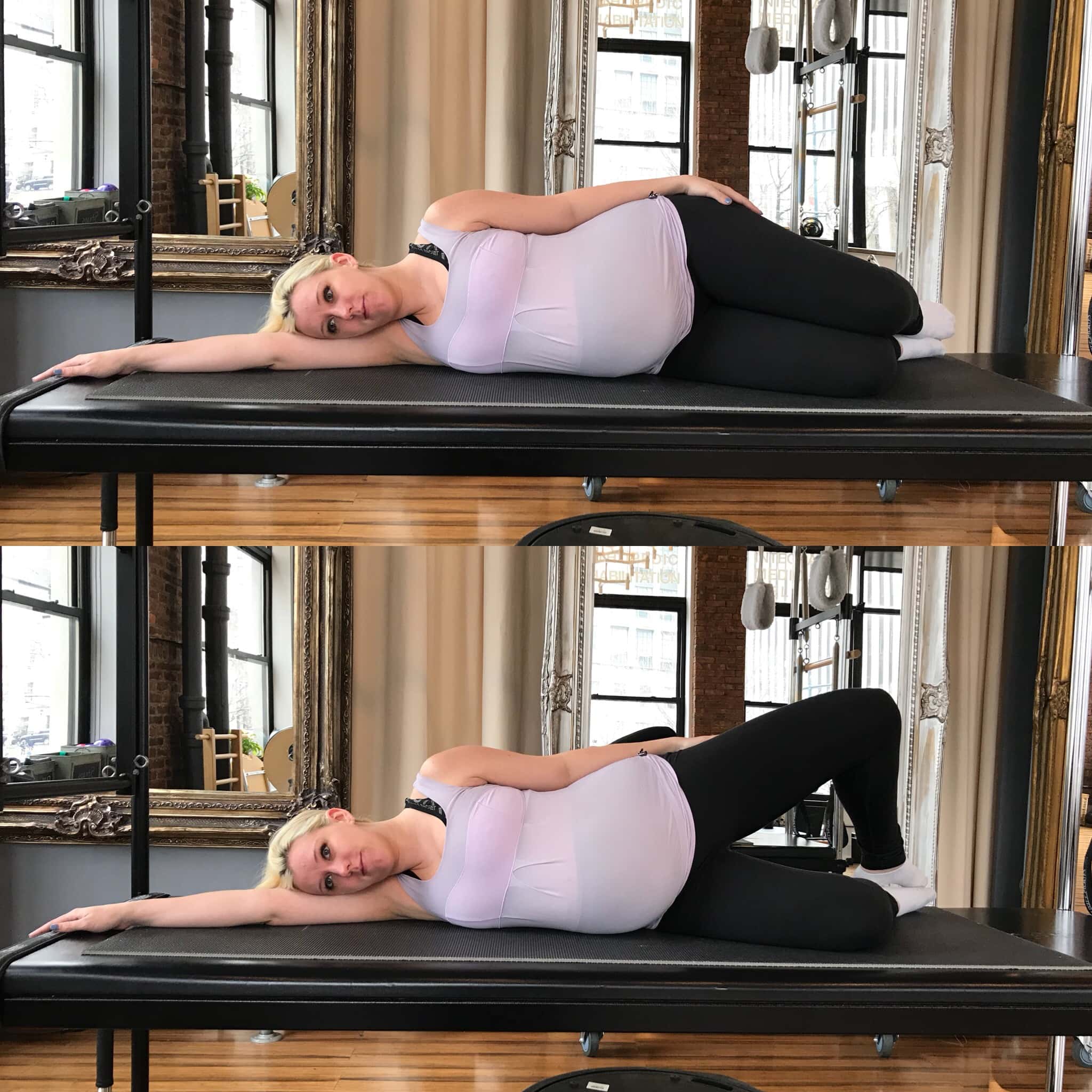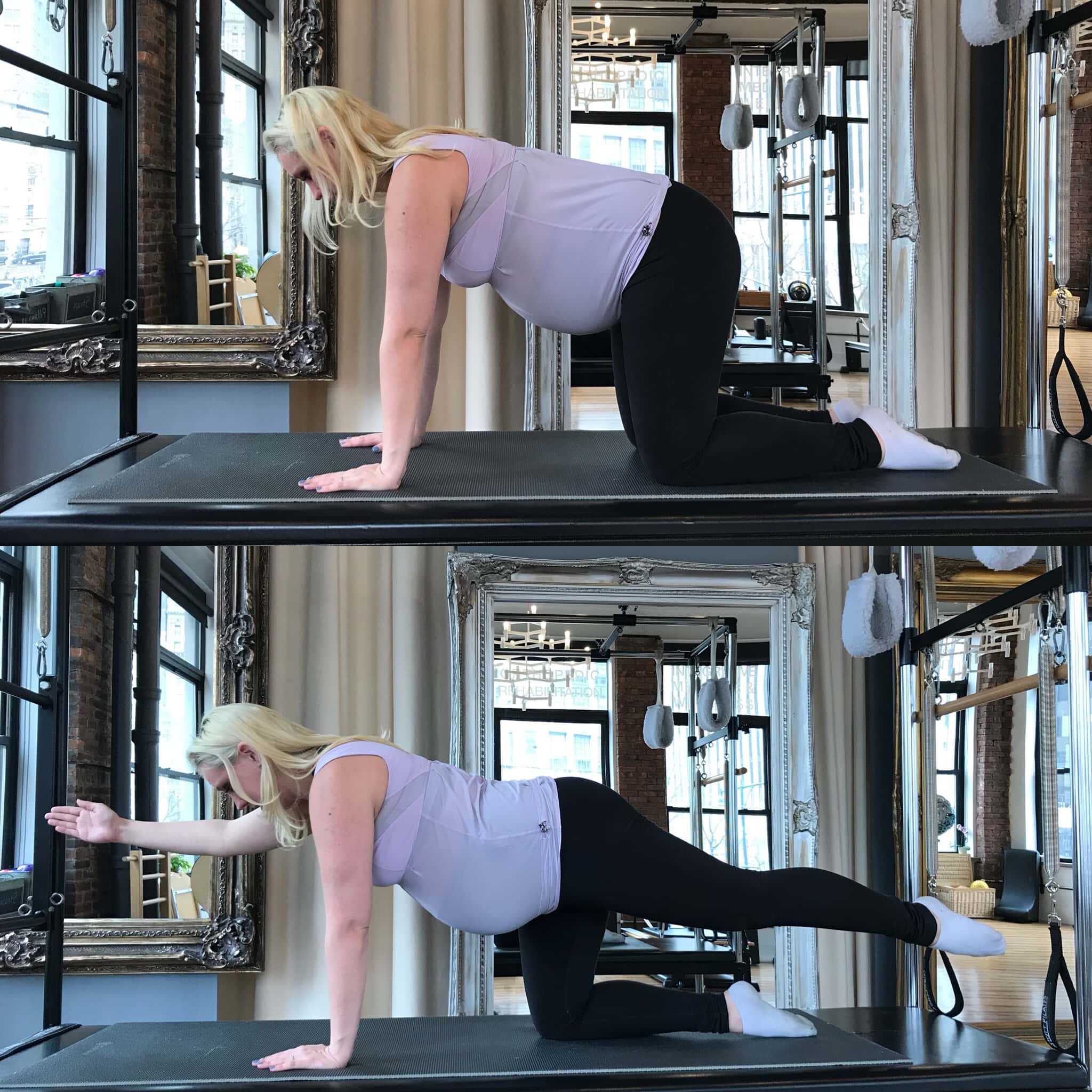
In this article, Physio Logic’s Pilates Studio Manager Allie Allison-Galazin and BASI Pilates instructor in training explains the benefits of practicing prenatal Pilates during pregnancy and includes Pilates exercises that can be done from home. She is currently 38 weeks pregnant with her first baby and has done Pilates throughout the pregnancy.
Pilates During Pregnancy | Maternity Pilates
Pilates is one of the best exercises you can do during pregnancy. It is a low impact workout that focuses on lengthening and strengthening the muscles needed for the duration of pregnancy, as well as postpartum.
Some of the benefits of prenatal Pilates include breath, transverse abdominal strength, gluteal strength and stretch, alignment, and pelvic floor.
Breath
As the baby grows and the uterus expands, the diaphragm is pushed upwards and the ribcage expands which causes compression that restricts the function of the diaphragm. Pilates teaches lateral breathing, which will make breathing more effective when you don’t have as much room to breathe.

Start by sitting on a stability ball or chair. Place your hands on your lower ribs with your fingertips touching each other, fill your rib cage and back with breath without using your lower belly. As you inhale the fingertips should separate and your ribs will fill with air and expand, as you exhale your fingertips should come back together as your ribs corset together, activating your transverse abdominal muscles. Use this breath pattern throughout your Pilates exercises.
Transverse Abdominal Strength
Pilates helps strengthen core muscles to help prevent diastis recti, which occurs when the upper abs start to separate. The focus should be working on strengthening the transverse abdominals throughout your Pilates routine to minimize the severity of the separation.
Gluteal Strength and Stretch
By improving gluteal strength during pregnancy, you are increasing stability and preventing pain in your pelvic area and helping manage pain in your low back. Gluteal tightness is a common symptom of pregnancy due to the changes in weight, overuse of muscles, pelvis shift and alignment shift.

The clamshell is an exercise used to strengthen your hips, inner and outer thighs, tone your glutes and stabilize your pelvic muscles. The perform the exercise:
- Lie on your side with your knees slightly bent and with one leg on top of the other. Stay in a neutral position with your abdominals engaged.
- Keep your feet together and lift your top knee.
- Lower your knee back to the initial position, repeat, and then switch sides

The butterfly stretch helps open hips and thighs while relieving glute tightness. To perform this stretch:
- Sit down on the floor and bring both feet together.
- With the help of your arms, drive your knees down into the floor while maintaining a flat back and keeping abdominals engaged.
- Hold the stretch for 20 to 30 seconds and then slowly release back to the starting position.
Alignment
As your body changes and the center of gravity shifts, your alignment is jeopardized. Common changes that happen in the body are: posterior pelvic tilt, internally rotated shoulders, lumbar lordosis, thoracic kyphosis and pronated feet. Pilates exercises are taught to reduce the effects of alignment changes.

Quadruped: this exercise helps strengthen the upper back as well as improve posture and alignment.
- Start on all fours in a neutral position with a flat back, shoulders over wrists and abs engaged.
- Extend arm and opposite leg while keeping the abs engaged and the back flat.
- Return to starting position and repeat with opposite arm and leg.
Pelvic Floor
One of the main functions of the pelvic floor is to support the organs in the lower abs. As the uterus grows it relies on the pelvic floor more and more for support. Having a strong pelvic floor will not only help during pregnancy and birth but also with recovery and preventing incontinence. Kegals are a common strengthening exercise for pelvic floor.
GENERAL DISCLAIMER: Please consult with your Physician before beginning any prenatal exercise program. Your Doctor will determine what type of prenatal exercise is safe and appropriate, for your body and pregnancy, based on your medical history.